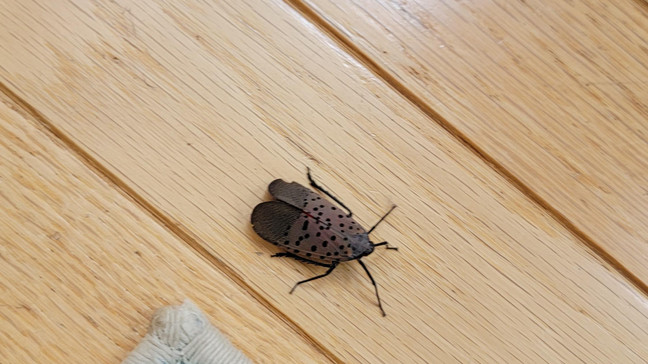Mother Nature is fighting back against the invasive spotted lanternfly: UMD bug expert
WASHINGTON (7News) — For the last six years the D.C. area has been battling the spotted lanternfly, but this year populations have exploded.
You have probably noticed this eye-catching insect striking with its spotted wings and black and red coloring a lot lately. So why are we seeing so many lately?
"As they feed, they will move from tree to tree. And this is why people are seeing them wind up on the side of a house, on a sidewalk, on a car, so they're more visible,"said Michael Raupp, who is an entomologist at the University of Maryland.
"We've gone from maybe a couple trees with a hundred lanternflies to hundreds of trees with hundreds or thousands of lanternflies in an area. So, this is why people are seeing more lanternflies here in the DMV," Raupp added.
"There have been many reports of heavily infested areas throughout the DMW with the exception of extreme southern Maryland," he added.
To date, scientists say spotted lanternflies are still dangerous to some plants. They kill grapevines, tree of heaven and black walnut saplings but now Mother Nature may be pushing back.
Raupp notes there is some good news.
"Back in central Pennsylvania and Berks County where they were first discovered, populations have already collapsed. There are hundreds of species of different kinds of animals, invertebrates like praying mantises, and spiders, and many species of birds are now adding spotted lanternflies to their diet. I call this Mother Nature's hit squad. And it's putting pushback on these spotted lanternflies, helping to reduce their populations," he said.
"We also know that naturally occurring soil microbes, fungi will attack and kill spotted lanternflies, collapsing their populations," Raupp added. "So there is some good news here, I think in the next several years, in places here in Maryland, as we're seeing in Pennsylvania, will actually see a reduction in spotted lanternflies population. So, don't give up hope. Mother Nature's at work. We're learning how to manage this thing better, so there's light at the end of this spotted lanternfly tunnel."
There are many products on the market to kill the spotted lantern fly if you find them on your trees. You could simply spray horticultural oils, safer soap, or pyrethrins, Raupp advises.




